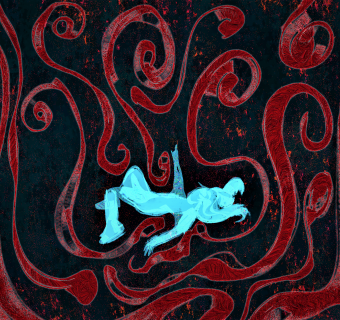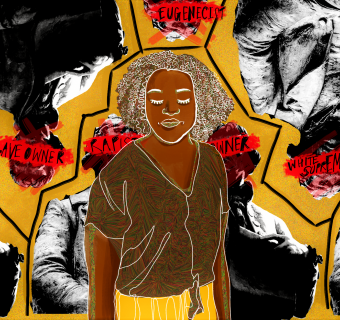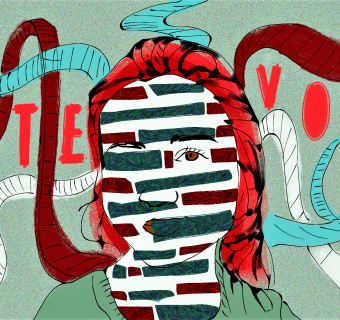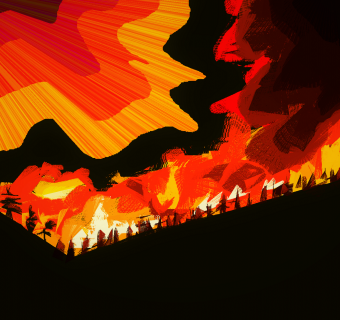The Ruffin Distinguished Artist in Residence is an annual position established by an endowment from the Peter B. and Adeline W. Ruffin Foundation. The first artist selected to hold this position is Cindy Bernard. Coming to the home of the cavaliers from Los Angeles, Cindy Bernard will be spending time working with fifth year students in the distinguished major program, as well as fifth year fellows.
When asked what brought Bernard to Charlottesville and how she found the Ruffin position, she told me that she is always looking for residency positions. Having lived in Los Angeles for a long time, she says she is interested in living and experiencing other places. She also noted the convenient proximity of Virginia to Newfoundland, the focus of her current work in progress. Charlottesville has proven to be a comfortable new experience for Bernard, giving her the opportunity to enjoy numerous great restaurants, dog parks, and a large tennis community. However, when talking about the differences between Los Angeles and Charlottesville, she did note that, “we’re talking the day before the high temperature is supposed to be 35 degrees.”
In her own works, Bernard likes to work across multiple mediums, from photography in her series “Ask the Dust” to film in her work, “Year Long Loop.” She commented that there is a lot of interest in exploring the complexities of duration and time. She says, “Art is an ongoing discourse anyway, right? It’s kind of a constant building on the history that has come before and reinvestigating of ideas that have come before, and one is just constantly in discourse with the artist that you’re looking at. So ‘Year Long Loop’ does that, as does ‘Ask the Dust’ and other works I’ve made.” 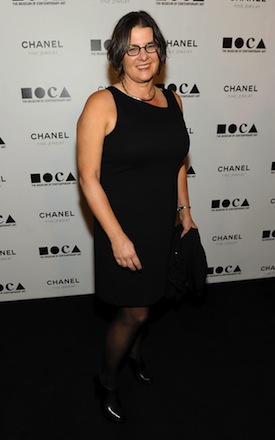
With her own interest in working across artistic mediums, Bernard wishes to extend the same interest to her students. In the Ruffin position, Bernard splits her time between teaching and working on her own pieces. Across these two semesters Bernard will teach 3 classes, focusing on exposing students to things they have not seen before. She hopes to encourage students to rethink their medium and what that medium is, along with generally thinking across disciplines.
She told me about one of the projects her students worked on this year after visiting Luray Caverns. After exploring the caverns, her students were to produce a new work. They could not merely illustrate the caverns; they could only pull from them for inspiration. The students had to think about the 3 rules that governed their work to date and break all of those rules. Their work also needed to utilize more than one medium. This is the type of experimentation across disciplines that Bernard encourages her students to explore. “I just wanted to force them to step outside of their comfort zone and experiment,” she said.
In splitting her time between teaching and working with the UVA art students, Bernard will continue to work on her own new piece while in Charlottesville. Her current project focuses on the quite incredible history of her family. Using an oral history of her grandmother that she did as an undergrad as her jumping off point, Bernard traveled to Newfoundland to learn more about her family’s history. From her time there Bernard took many photographs not only of places specific to her family’s history, but of the outports she visited while she was there. She also conducted interviews with the people that lived in these outports, and discovered some interesting information about her Newfoundland history.
“What I discovered in my research was that this newspaper plant produces newspaper pulp and newsprint that’s used all over the world. So I found it really interesting that this quite isolated place was producing this product that the New York Posted is printed on, there’s a local paper here in Virginia that’s printed on it, there are papers in Europe that are printed on it, papers in South America…and I saw this as kind of a metaphor for the displacement of my own family and the displacement and dispersal of my own family members, so I’ve been working with that kind of product quite a bit.”
She notes that this piece is still largely in the works, but I greatly anticipate the final product that will be exhibited at the Fralin museum at the end of the academic school year. After completing her residency here, Bernard will look for other residencies, continuing to gain new experiences living outside of Los Angeles. During this academic year however, I expect students to have a great experience with Cindy Bernard and her work to be great story to add to the Fralin museum. Image Credit: http://tinyurl.com/mgho8l8 & University of Virginia.

